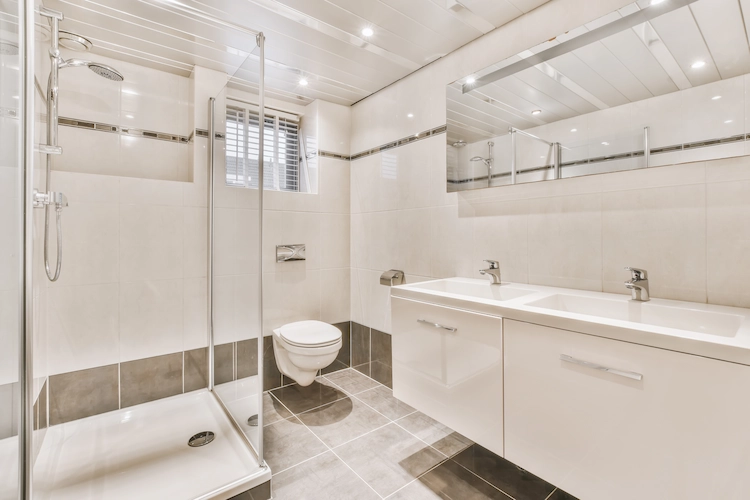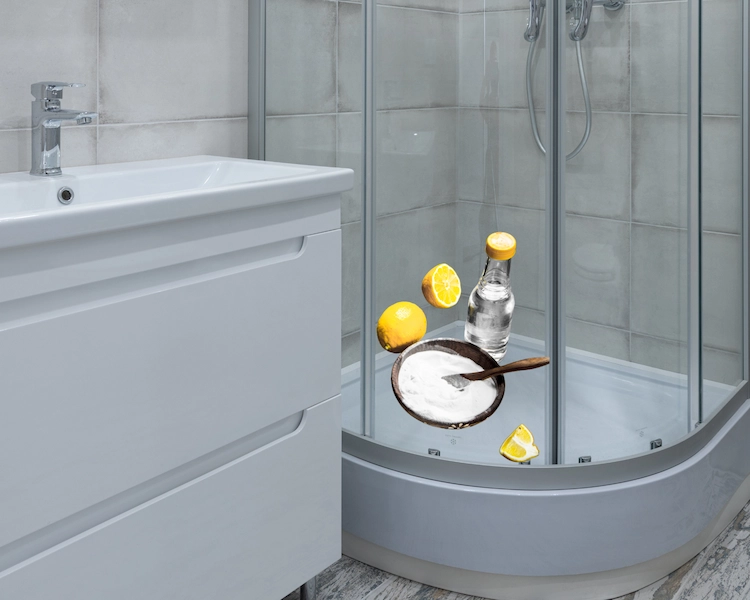Nobody wants to step into a dirty shower. But you don’t always need special cleaning products to keep them sparkling clean. But you don’t always need special cleaning products to keep it sparkling clean. Are you looking for easy ways to clean your shower tray? Can you use natural home remedies for this?
To maintain a sparkling shower tray, regular cleaning is essential. Below you will find out how you can do this using only natural home remedies, without using commercially available cleaning products.
Clean the Shower Tray: Make It Shine Again with Natural Home Remedies and Effective Methods
Shower trays are used every day and therefore harbor a lot of dirt. And if they look dirty, they can significantly affect the overall look of the bathroom. Limescale, soap scum and even rust accumulate and cause unsightly and unhygienic stains on the surface. Fortunately, a dirty shower tray can be tackled with some natural solutions to achieve a clean and spotless result.
Also read: How to Keep Glass Shower Doors Clean and Sparkling?
How Often Should You Clean The Shower Tray?
People often wait until the shower tray shows visible signs of dirt. However, it is best to clean the shower tray right after you have used it, as the hot air and water will simply loosen the dirt.
A thorough cleaning should be carried out every few weeks to reduce soap and limescale deposits and prevent rust stains.
If you have a textured shower tray, cleaning may be a little more difficult and you can use a sponge or even an old toothbrush for this.
Remove Limescale Deposits Effectively
Even if you clean your shower tray regularly with soap and water, limescale deposits cannot always be avoided. However, these can be easily removed with simple home remedies. All you need is some white vinegar or lemon juice, which you apply to a clean cloth and rub the surface until it is clean again.
If you’re dealing with more stubborn deposits, mix 1 part vinegar or lemon juice with 4 parts water and spray the shower tray with the solution. Leave it for 1 hour and polish it with the rest of the solution after the lime has soaked well.
Remove Mold Stains with Baking Soda and Vinegar
Mold growth in the shower is a common problem. A mixture of vinegar and baking soda can help here.
Sprinkle a generous amount of baking soda over the entire surface of the shower tray and then spray it with white vinegar. Simply let the solution sit for a few minutes until the hissing reaction has stopped. Scrub the dirty areas with a brush, then rinse the shower floor with water and wipe it clean.
Treat Rust Stains
Rust stains are very unsightly, so it’s best to get rid of them quickly so the problem doesn’t get worse. You can scrub them for hours without success. However, with a little patience and the right method, these can be easily removed.
Before you start cleaning, make sure the bathroom is well ventilated.
Generously cover the affected area with white vinegar or lemon juice and leave it on for at least two hours. Rinse the surface with clean water and check whether the rust stains are removed.
If not, dry the area with a towel and make a paste of baking soda and white vinegar.
To do this, heat about 3,5oz/100 ml of white vinegar in the microwave, then add 1 oz/30 ml of lemon juice and 3,5oz/100 g of baking soda and stir until a thick paste forms.
Apply the paste to the rusty areas, cover with an old towel and leave for 2-3 hours. Then rinse the surface with water; the rust should be completely removed.
Clean Textured Shower Tray with Mineral Oil
If you have a shower tray with a textured surface, this can make cleaning a real challenge. Fortunately, there is a trick you can use to remove the soap residue.
Mix four parts mineral oil with one part warm water, pour the solution into a spray bottle and mist the surface liberally. Then scrub the floor with a sponge in a circular motion.
Prepare a solution of equal parts water and white vinegar and use it to complete the cleaning.
Make sure to rinse the floor completely with warm water to avoid the risk of slipping due to mineral oil residue.
Also read: How to clean a shower properly? 8 remarkably easy steps and for guaranteed results!



